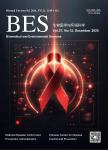Liver Nuclear Activation of Carbon Tetrachloride or Bromotrichloromethane to Trichloromethyl and Trichloromethylperoxyl Free *** Reactions With Lipids and Proteins
Liver Nuclear Activation of Carbon Tetrachloride or Bromotrichloromethane to Trichloromethyl and Trichloromethylperoxyl Free *** Reactions With Lipids and Proteins作者机构:Centro de Investígaciones Toxicológicas (CEITOX)-CITEFA/CONICET 1603 Villa Martelli Buenos Aires Zufriategui 4380 Argentina 1603 Villa Martelli Buenos Aires Zufriategui 4380 Argentina
出 版 物:《Biomedical and Environmental Sciences》 (生物医学与环境科学(英文版))
年 卷 期:1998年第11卷第2期
页 面:101-114页
核心收录:
学科分类:100405[医学-卫生毒理学] 1004[医学-公共卫生与预防医学(可授医学、理学学位)] 10[医学]
主 题:NADPH Liver Nuclear Activation of Carbon Tetrachloride or Bromotrichloromethane to Trichloromethyl and Trichloromethylperoxyl Free Radicals.Their Reactions With Lipids and Proteins Free
摘 要:The formation of·CCl3 radicals in liver nuclei was suggested by spin trapping of them with N-t-butyl-α-phenylnitrone followed by GC/MS detection of the resulting adduct. Comparison of its formation in microsomal biotransformation of CCl4 was made. In aerobic nuclear activation mixtures containing NADPH and CCl4, significant decrease in the arachidonic acid content of nuclear lipids was observed (27. 8%, compared to control), the intensity of this decrease was lower than that occurring in the corresponding microsomal incubation mixtures (29.1%). Significant decreases in arachidonic acid content of nuclear and endoplasmic reticulum lipids were also observed in animals at 6 hours of poisoning with the haloalkane. During aerobic nuclear metabolism of CCl4 or CBrCl3, cholesterol oxidation products were detected: a ketocholesterol, an epoxide like structure and 7-ketocholesterol. Nuclear protein carbonyl formation was not promoted during nuclear CCl4 biotransformation. NADPH by itself may lead to protein carbonyl formation during prolonged periods of incubation. CBrCl3 in contrast, led to decreased protein carbonyl formation. No increase in nuclear protein carbonyl formation was observed in CCl4 intoxicated animals during periods of time between 1 to 6 hours after treatment. The results indicate that during nuclear biotransformation of CCl4 or CBrCl3 reactive free radicals, PUFA degradation, reactive aldehydes and cholesterol oxidation products are formed, nearby DNA and regulatory proteins.



